SUMMARY
This is AI generated summarization, which may have errors. For context, always refer to the full article.
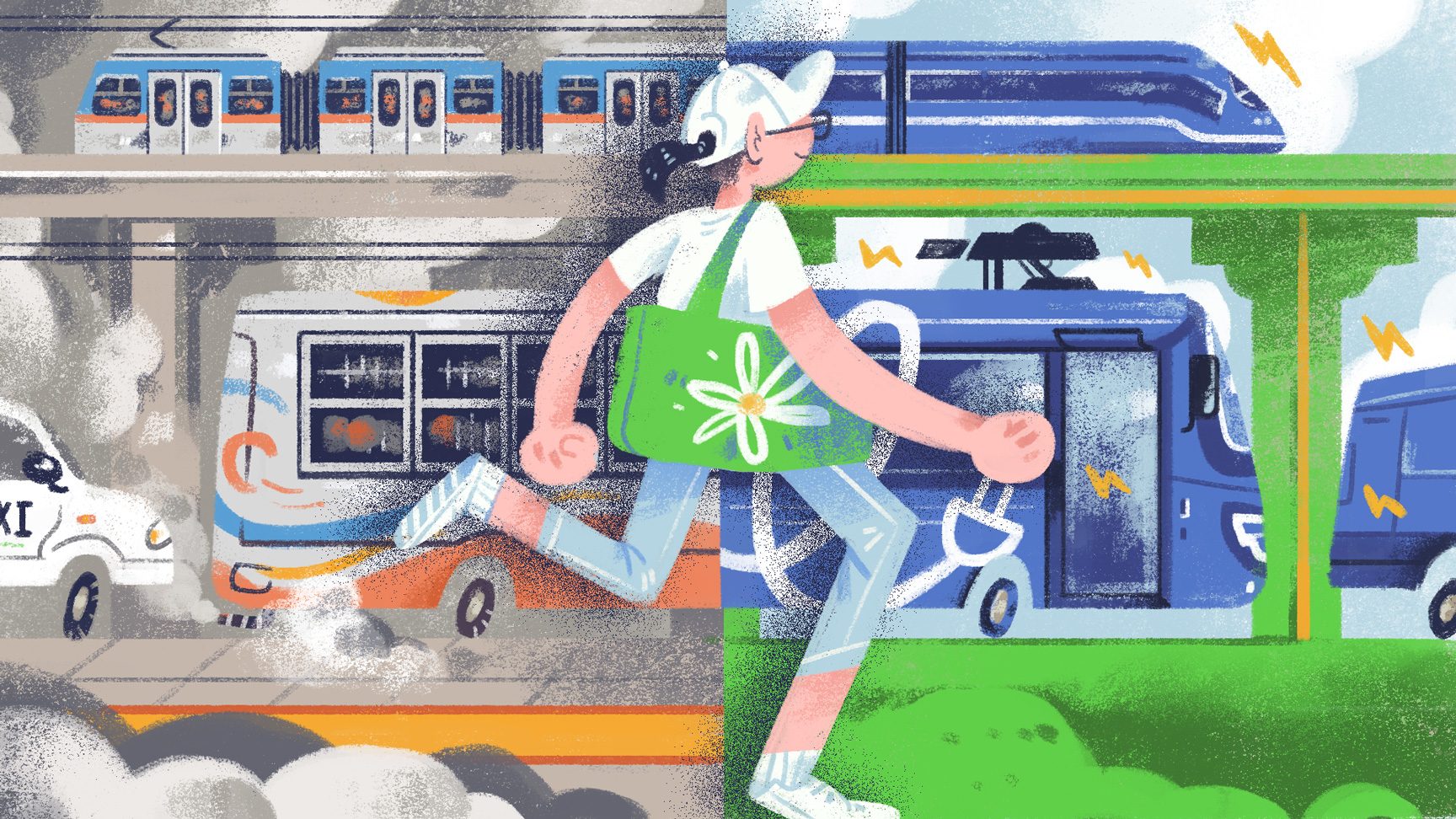
MANILA, Philippines – It is inhumane to be a commuter in the Philippines.
When one thinks of public transportation in the country, long lines in terminals, a congested EDSA during rush hour, and commuters stranded on rainy days are some of the images that usually come to mind.
Skyways and road expansions are often the touted solutions to this crisis. But there are endless possibilities. For one, many countries are starting to shift to electric public transport.
Imagine for a moment: in the Philippines, a fully electric fleet of buses, trains, jeepneys, and tricycles working on a smart, integrated network, efficiently serving millions of Filipino commuters every day.
These vehicles are quieter than their diesel and gasoline counterparts. They do not produce emissions and contribute to air pollution. There are no sick smells along the streets, and you can actually hear the conversation you’re having with a friend while walking alongside a major avenue.
It sounds like a pipe dream. Except it need not be.
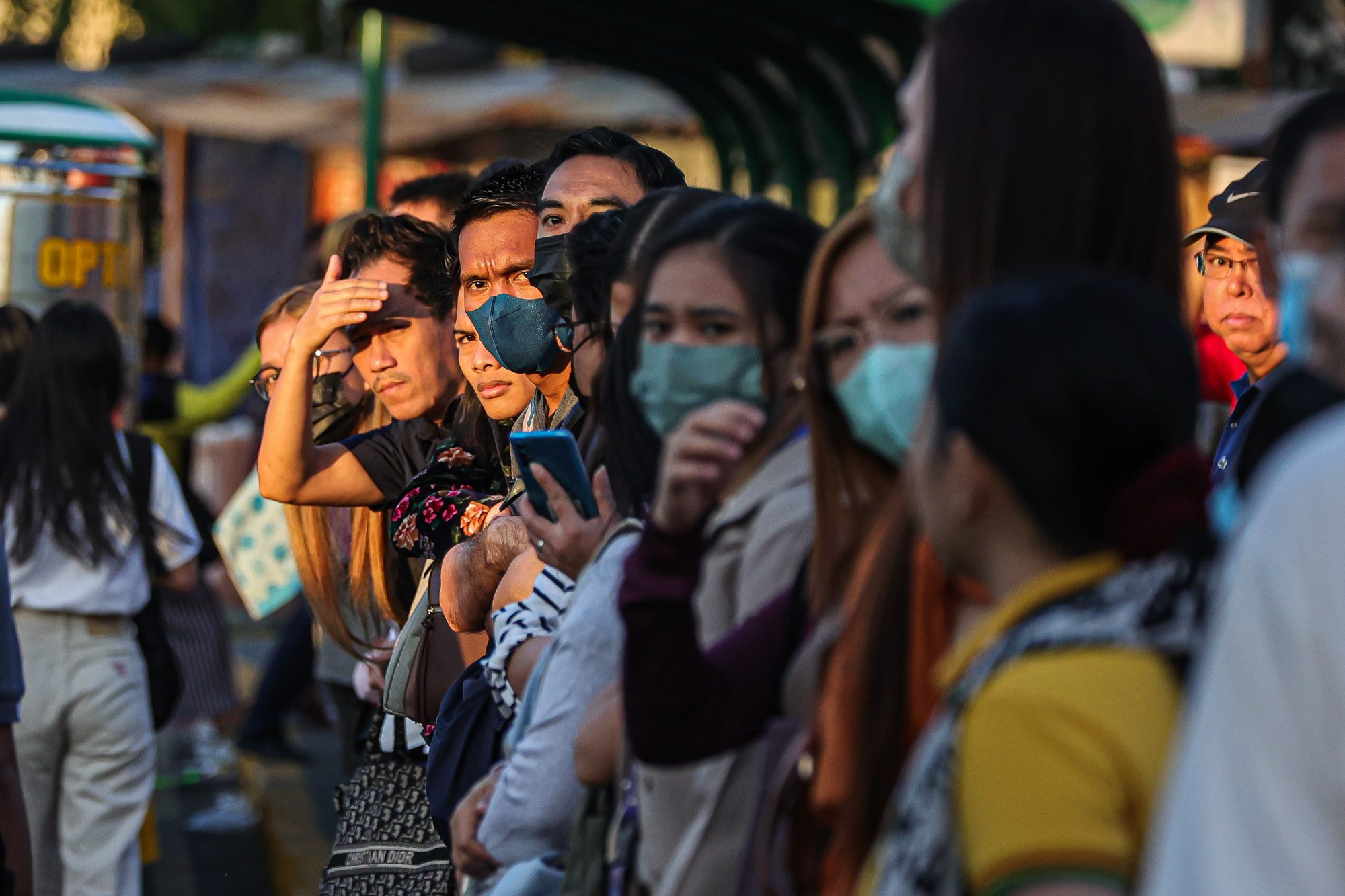
“Cleaner public transport will definitely make cities more breathable,” transport planner Keisha Mayuga told Rappler. Mayuga is the founder of Life Cycles PH, a group that sought to provide bikes for frontliners during the COVID-19 pandemic.
“Efficient public transport systems encourage people to leave their cars and opt to commute instead. In many cities where many people take public transport instead of private vehicles, temperatures and noise levels tend to be lower.”
Mayuga said that aside from these perks, sustainable public transport creates an environment where human connections are made instead of being “isolated in private vehicles.”
What are we doing now?
The transition to electric vehicles is a key component to the decarbonization of the economy, something that President Ferdinand Marcos Jr. emphasized in his second State of the Nation Address.
Transportation is one of the sectors that emit the most greenhouse gas emissions, along with energy and agriculture. Making transport cleaner is part of the Philippines’ commitment to fulfill its Nationally Determined Contributions or NDCs – climate pledges that promise to reduce emissions.
“The decarbonization of our transport system really stems from our Nationally Determined Contributions, based on the Paris Agreement,” Majah Ravago, energy economist from Ateneo de Manila University, told Rappler in an interview.
Ravago said that while the Philippines is not one of the biggest polluting countries, it has to decarbonize to maintain diplomatic relations and fulfill international agreements.
A few months before stepping down from office, former Philippine president Rodrigo Duterte signed Republic Act No. 11697, or the Electric Vehicle Industry Development Act, in April 2022. The law aims to create an environment where electric vehicles become a feasible mode of transportation in the country.
Under this new law, the government created incentives for individual drivers, operators, and local manufacturers. Some of these incentives range from exemption from the number coding scheme to tax exemptions for the import of raw materials.
As the transportation system slowly transitions to cleaner fuels and technology, public transport operators have been making use of Euro-compliant fuels. This system sets a standard for fuels that limits sulfur content. For example, Euro 4 allows 50 parts per million (ppm) of sulfur content in fuels, while Euro 5 allows 10 ppm. The lower the sulfur content, the lesser the contribution to air pollution.
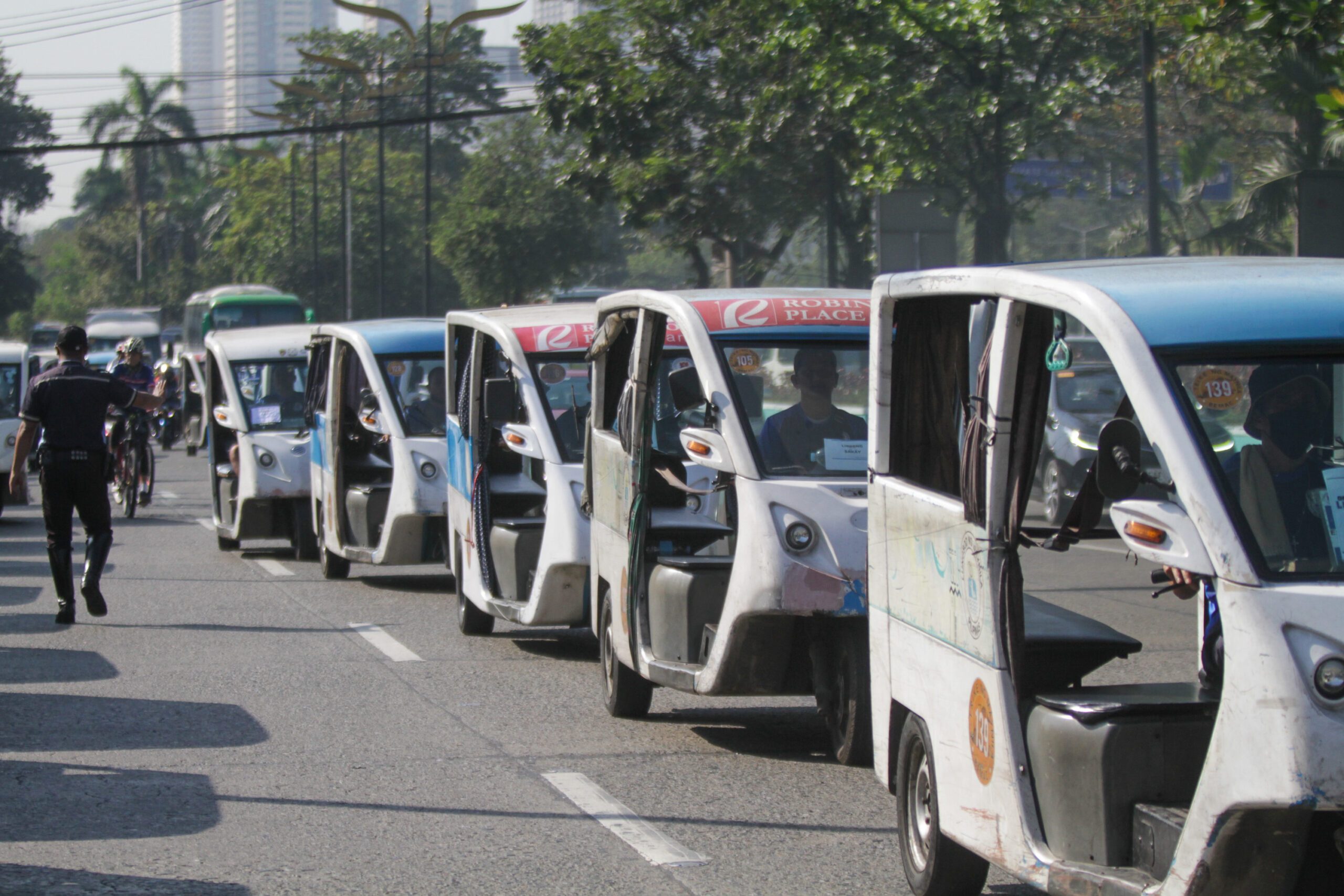
While these moves contribute to cleaner fleets, Transportation Secretary Jaime Bautista said in a Philstar.com report last May that they were already encouraging operators to go full electric.
“We are also asking the transport operators that instead of running on Euro 5 and Euro 6 engines, which are of less air hazard emissions, they can go on full electric since such would be our way to a total green transport system,” said Bautista.
However, dreams of transitioning to cleaner fuels and technologies hit a snag with the government’s jeepney modernization program. The government has moved the deadline of jeepney consolidation to the end of the year, after transport groups staged a multi-day strike ahead of the phaseout initially scheduled for June 30.
If the program tells the government anything, attempts to modernize transport should not only consider technological capabilities but also the financial and social costs it would impose on drivers, operators, and commuters.
Bautista said in a Rappler Talk interview that the government is not implementing a phaseout because they are also taking into account the number of modernized jeepneys coming in to actually replace all operating units.
According to Bautista, only 6,000 units are modernized out of the 180,000 operating jeepneys in the Philippines.
“Para palitan mo ‘yung 180,000, ‘di mo magagawa ‘yan nang isang taon o dalawang taon o tatlong taon.” (For us to replace all 180,000 operating jeepneys, it would take years.)
Roadblocks ahead
It’s not that technology isn’t available. Filipino scientists and engineers can develop the technology, and efforts, while fragmented, are being undertaken by both the government and the private sector.
The Department of Science and Technology has been developing a lithium-ion battery-powered jeepney that produces zero emissions and no noise pollution. The science department also created the country’s first hybrid electric train, powered by both electricity and diesel.
According to Science Secretary Renato Solidum, the e-jeep models are being adopted by Tojo Motors for their 16- and 24-seat models. They are also under negotiation with an agromech firm based in Cagayan Valley for an e-trike model they developed.
While the tech is already here, these are yet to be fully integrated into the transport network. Why is that? Solidum said they need more support.
“One challenge is intensive capitalization needed to start manufacturing and [producing] units at scale,” Solidum told Rappler. “We could use additional support in the form of platforms and venues for promoting to prospective investors, localization of support, and business integration.”
Earlier this year, the Department of Energy partnered with oil giant Shell to conduct a pilot study on the feasibility of electric vehicle charging stations powered by renewable energy.
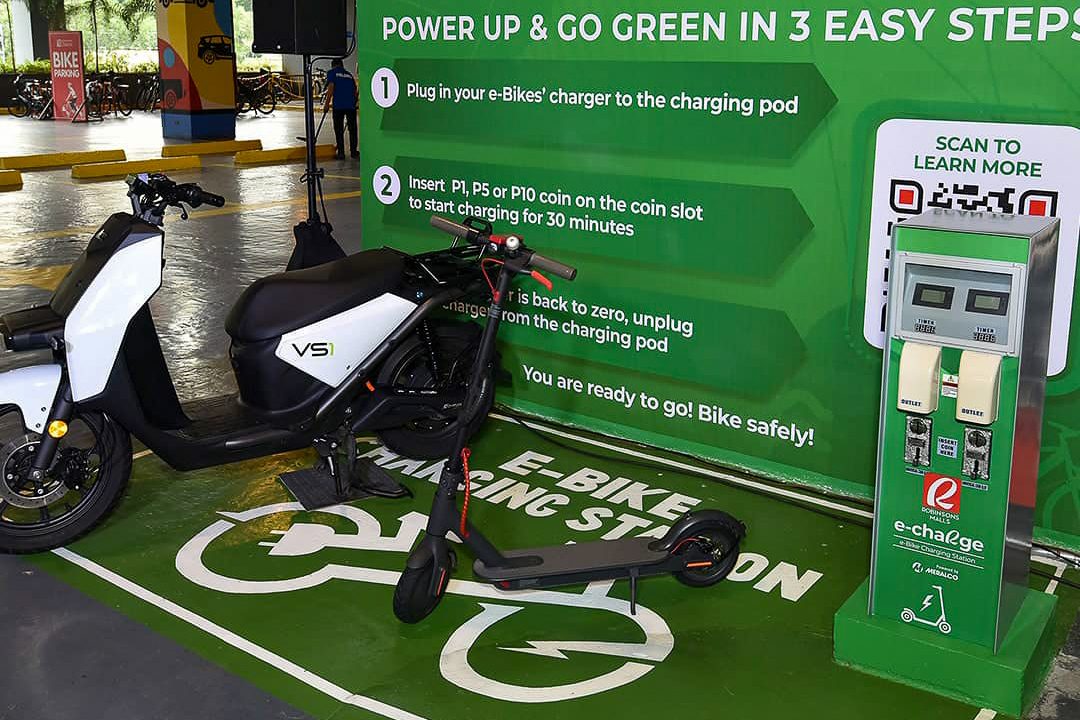
The scarcity of electric vehicle charging stations creates “range anxiety” for drivers. After all, these charging stations are not as prevalent as the ubiquitous gas stations that dot roads, highways, and major expressways in cities and provinces.
If infrastructure to support electric public transport is not developed, it could ultimately harm the Filipino commuter as there would be fewer routes and fewer vehicles on the road. As the public had seen in numerous transport strikes in the past, classes and work can be disrupted when the streets are empty.
“The Philippines has to develop a conducive environment for electric public transport vehicles,” Robert Siy, mobility advocate and co-convenor of Move as One Coalition, told Rappler.
“This includes not only having charging infrastructure available all around our cities, but also the technical capacity to operate and maintain electric vehicles.”
After infrastructure, there are also financial and social costs that need to be considered. Going full electric can be a shock to many operators as the transition would require a large investment. This was the major roadblock for the jeepney modernization program, where modern jeepneys are priced at around P1.3 million to P2.6 million – an impossible ask for the average tsuper (driver).
But if this hurdle is overcome, electric transport can prove to be financially viable as it would have lower operating costs. It would not be affected by the volatility of gas prices around the world. Lower costs can also mean affordable fares for commuters.
“While the purchase cost of an electric bus or jeepney may be higher than that of a diesel bus or jeepney, the operating costs tend to be lower and more stable,” Siy said.
“If operating costs are low and stable, this helps public transportation maintain its financial viability and sustainability.”
Currently, prices of lithium, the material used for the batteries of electric vehicles, are falling. If this trend continues, it can make electric vehicles more affordable.
Jeepney drivers and transport groups are also not opposed to clean technology per se. For some, modernization would pave the way for steady salaries and benefits for drivers.
Modernization and response to the climate crisis are not mutually exclusive; for many advocates, these two should go side by side through just transition, which means an inclusive arrangement for all sectors involved.
Less cars, better cities
The Philippines’ neighboring countries have already started an aggressive shift to cleaner transport, too. In Indonesia, they have started building the electric vehicle ecosystem – the production of batteries and the construction of infrastructure where batteries could be exchanged – through state-owned energy company Pertamina.
Meanwhile in Singapore, 400 new electric buses are set to ply routes in December 2024, according to a Straits Times report. Singapore’s Land Transport Authority found in a trial that electric buses reduced emissions by 50% compared to those that run on diesel.
While electric vehicles as public modes of transport are not yet mainstream in the country, commuters who want a reprieve from the inhumane traffic conditions with sustainable options can make use of e-bicycles and e-scooters. (READ: High fuel prices prod more Filipinos to turn to e-kickscooters, micromobility)
When the pandemic created a bike boom, many bike enthusiasts and mobility advocates discovered the wonders of the e-bike. It is easier to use because of its pedal assist system, and it’s perfect for the humid weather that can quickly tire active commuters.
Siy said that while individual electric vehicles may be a cleaner option compared to internal combustion engines, the “best result is if we can get people in cars to shift to electric public transportation.”
In general, adoption of electric technology both in an individual capacity and in the transit system would be beneficial for all.
“Fewer people in cars will mean less traffic and less pollution,” said Siy. “As more people make the shift to these sustainable travel modes, our cities will be greener, healthier, less noisy, less congested, and more livable.”

As populations in cities grow – in Metro Manila, for example, there are more than 13 million residents as of 2020 – public transport needs to be designed in a way that will work for the next few decades, said Mayuga.
“Mobility is the backbone of a city,” said Mayuga. “Green cities understand that and prioritize making transport more sustainable by providing adequate public transport supply, encouraging more cycling and walking communities, and decreasing private vehicle dependency.”
Green transport needs green energy
Part of the United Nations’ 2030 Sustainable Development Goals is creating sustainable communities and cities, as well as making energy affordable and clean.
The shift to electric vehicles is a response to the climate crisis. But truly clean transport requires a clean energy mix because what use is an all-electric public transport if it takes its power from fossil fuels?
“But the main thing to understand [is that] even if we convert all our vehicles to electric vehicles, remember the source of electricity,” said Ravago. “A big portion of our power generation is still coal [and] that contributes to greenhouse gas emissions,” she added.
Fossil fuels make up more than half of the Philippines’ energy mix, while renewable energy’s share is only less than 30%. Marcos said during his SONA that the government is “aggressively” pushing for more renewable energy projects, awarding an additional 126 projects in the past year. Only time will tell whether these projects would translate to a significant change in the country’s energy mix.
Ravago said she is hopeful there are going to be significant reforms this time on energy as the sector figures prominently in the government’s eight-point socioeconomic agenda, along with improved transportation.
“Of course we may not be able to get all the reforms,” said Ravago. “But some reforms may be there.” – Rappler.com
Add a comment
How does this make you feel?
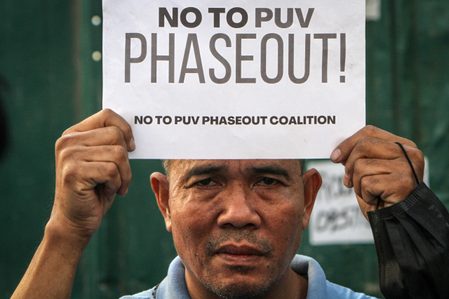
![[ANALYSIS] The economics of jeepney modernization](https://www.rappler.com/tachyon/2023/03/20230310-economics-jeepney-modernization.jpg?fit=449%2C449)
![[OPINION] Wanted: A just transition for the jeepney sector amid the climate crisis](https://www.rappler.com/tachyon/2023/03/Wanted-A-just-transition-for-the-jeepney-sector-1.jpg?fit=449%2C449)







![[Under 3 Minutes] When will we see modern jeepneys on the road?](https://www.rappler.com/tachyon/2024/04/francisco-motors-modern-jeepney-prototype-1.jpg?resize=257%2C257&crop=590px%2C0px%2C1012px%2C1012px)



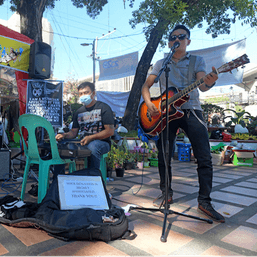




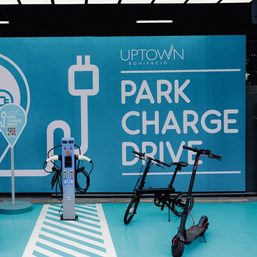

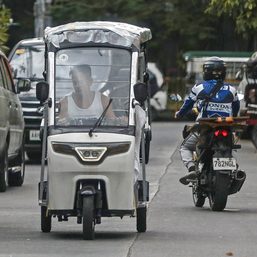
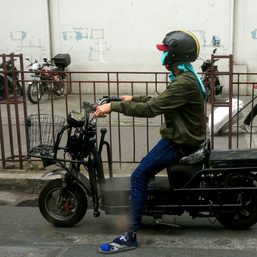

![[ANALYSIS] Why do we pay higher power rates when we have power outages?](https://www.rappler.com/tachyon/2024/07/tl-higher-power-rates-higher-power-outages.jpg?resize=257%2C257&crop=401px%2C0px%2C1080px%2C1080px)





There are no comments yet. Add your comment to start the conversation.